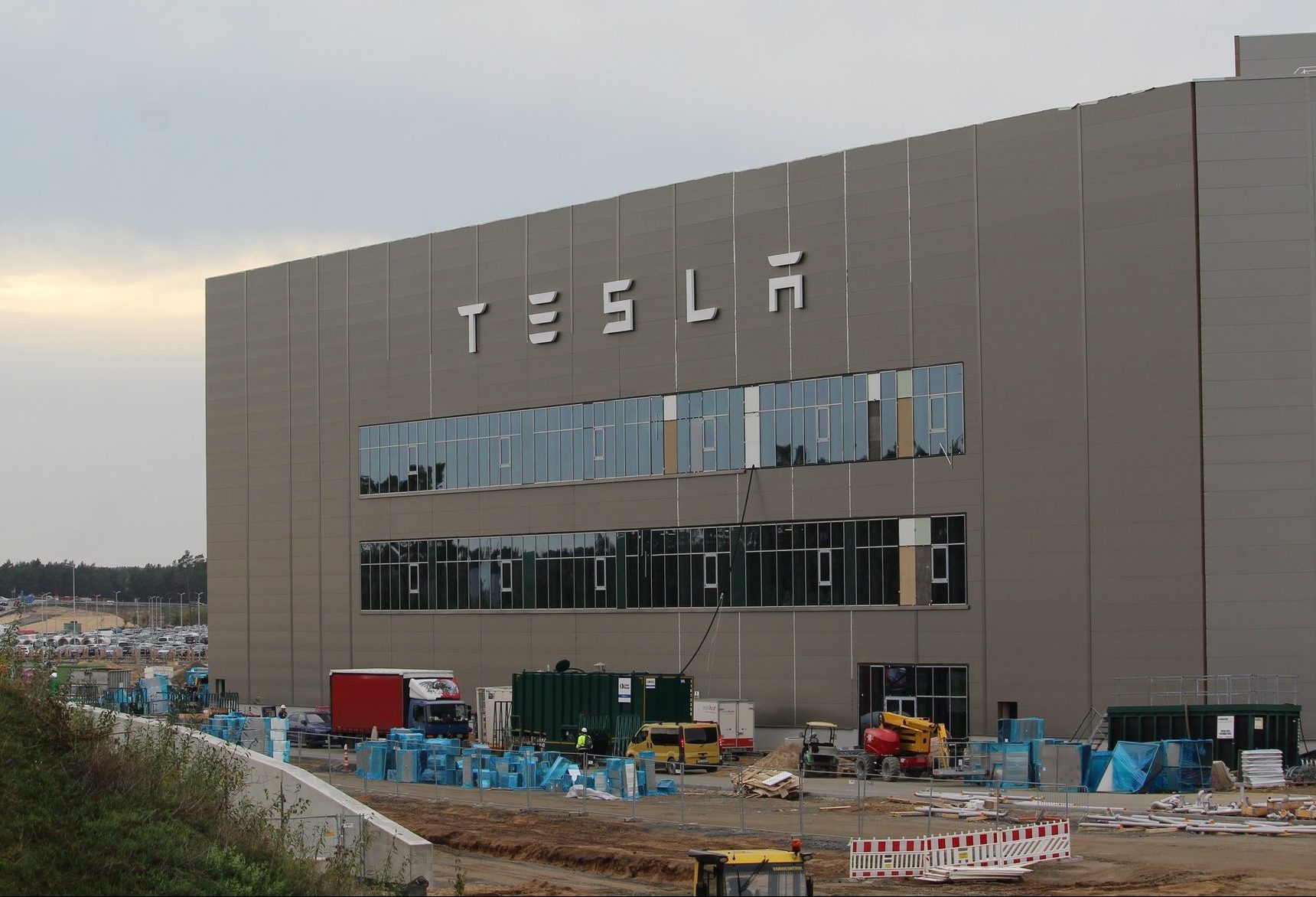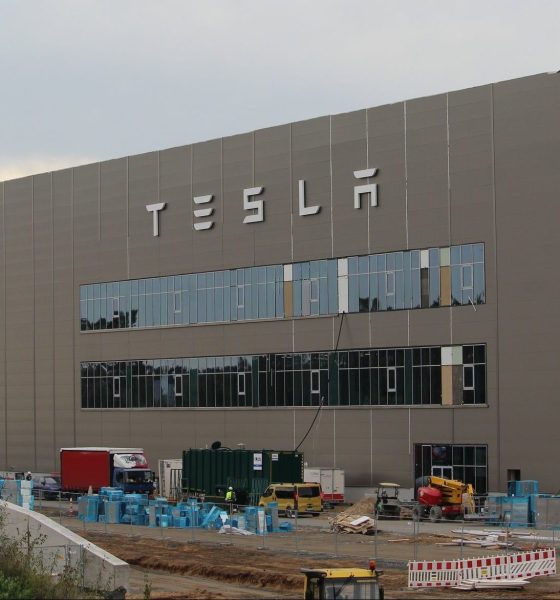

News
Tesla Giga Berlin expansion faces roadblocks, but officials determined to find solutions
Tesla’s planned expansion of its German production facility Giga Berlin faces roadblocks as the automaker will need more water and electricity for operation, which may be in short supply. However, officials are determined to find solutions to the problems.
Brandenburg Prime Minister Dietmar Woidke assured Tesla and its CEO Elon Musk that the unresolved supply issues will be solved, and the local government is committed to finding a fix.
Tesla has been such an overwhelming contributor to the economy in Brandenburg that officials are willing to do whatever it takes to assure the automaker that any issues will be met with solutions.
The company has 10,000 employees and 140 trainees, Woidke said, adding that “Tesla has become Brandenburg’s largest industrial employer in less than a year.”
Woidke said, “We are looking forward to the expansion with great anticipation,” according to a letter seen by German media outlet Moz.de, knowing that power and water are still potential issues for the planned expansion of the plant.
However, Woidke is not willing to take anything but solutions as an answer and assured Tesla that the government will remain “unchanged and as reliable as in the past” and that it would come up with solutions to support the automaker’s expansion before the Summer.
RELATED:
Tesla faces criminal charges in Germany related to piles driven at Giga Berlin
Woidke’s comments follow Economic Minister Jörg Steinbach’s meeting with Tesla brass in Texas. The two sides met earlier in March. Steinbach didn’t respond to Teslarati’s request for comment on the meeting, but it appears it was to assure the company that Brandenburg is committed to the company and the expansion of Giga Berlin.
“It was important to give Tesla the reassurance of the ongoing support of the Brandenburg government for the potential expansion,” Steinbach said in a Tweet.
Visiting our friends at Austin Gigafactory. It was important to give @Tesla the reassurance of the ongoing support of the Brandenburg government for the potential extension of #giga4 at Grünheide. Thx for the hospitality. @elonmusk @MarleneMehnert @rohanspatel pic.twitter.com/7BdS5kqJDU
— Jörg Steinbach (@joergstb) March 7, 2023
The Risks: Water and Electricity
Water and electricity are the main barriers to the expansion, with water being the largest concern. Tesla, while consuming far less than the industry average, still regularly deals with pushback from local citizens and the Strausberg-Erkner water association (WSE).
The major concerns are what the factory’s water usage could potentially do to the supply for the entire region.
Tesla’s usage, which has undercut other comparable companies in Brandenburg, has caused the State Environment Agency to lift the requirement that the WSE must be involved in groundwater-related issues, a report from rbb24 said.
Political groups have also called for Tesla’s operation to be restricted and do not feel as if the company should be given preferential treatment, criticizing Woidke and Steinbach for the support they’ve given the company.
Tesla Giga Berlin Expansion
Tesla has already started preparing the land it plans to build on for an expansion of the factory. At least 170 acres will be cleared to make way for new buildings that would support annual production of between 500,000 and 1 million vehicles per year.
The increased production would likely help Tesla alleviate reliance on imports from Gigafactory Shanghai, which has sent vehicles to Europe to support demand.
Giga Berlin has not struggled with production, however, and recently reached a run rate of 4,000 vehicles per week, a goal that was hit well ahead of schedule.
Tesla still must wait for a vote from government officials to approve the expansion plans. It was scheduled for December but delayed with no new date set.
I’d love to hear from you! If you have any comments, concerns, or questions, please email me at joey@teslarati.com. You can also reach me on Twitter @KlenderJoey, or if you have news tips, you can email us at tips@teslarati.com.

News
Tesla starts showing how FSD will change lives in Europe
Local officials tested the system on narrow country roads and were impressed by FSD’s smooth, human-like driving, with some calling the service a game-changer for everyday life in areas that are far from urban centers.

Tesla has launched Europe’s first public shuttle service using Full Self-Driving (Supervised) in the rural Eifelkreis Bitburg-Prüm region of Germany, demonstrating how the technology can restore independence and mobility for people who struggle with limited transport options.
Local officials tested the system on narrow country roads and were impressed by FSD’s smooth, human-like driving, with some calling the service a game-changer for everyday life in areas that are far from urban centers.
Officials see real impact on rural residents
Arzfeld Mayor Johannes Kuhl and District Administrator Andreas Kruppert personally tested the Tesla shuttle service. This allowed them to see just how well FSD navigated winding lanes and rural roads confidently. Kruppert said, “Autonomous driving sounds like science fiction to many, but we simply see here that it works totally well in rural regions too.” Kuhl, for his part, also noted that FSD “feels like a very experienced driver.”
The pilot complements the area’s “Citizen Bus” program, which provides on-demand rides for elderly residents who can no longer drive themselves. Tesla Europe shared a video of a demonstration of the service, highlighting how FSD gives people their freedom back, even in places where public transport is not as prevalent.
What the Ministry for Economic Affairs and Transport says
Rhineland-Palatinate’s Minister Daniela Schmitt supported the project, praising the collaboration that made this “first of its kind in Europe” possible. As per the ministry, the rural rollout for the service shows FSD’s potential beyond major cities, and it delivers tangible benefits like grocery runs, doctor visits, and social connections for isolated residents.
“Reliable and flexible mobility is especially vital in rural areas. With the launch of a shuttle service using self-driving vehicles (FSD supervised) by Tesla in the Eifelkreis Bitburg-Prüm, an innovative pilot project is now getting underway that complements local community bus services. It is the first project of its kind in Europe.
“The result is a real gain for rural mobility: greater accessibility, more flexibility and tangible benefits for everyday life. A strong signal for innovation, cooperation and future-oriented mobility beyond urban centers,” the ministry wrote in a LinkedIn post.
News
Tesla China quietly posts Robotaxi-related job listing
Tesla China is currently seeking a Low Voltage Electrical Engineer to work on circuit board design for the company’s autonomous vehicles.

Tesla has posted a new job listing in Shanghai explicitly tied to its Robotaxi program, fueling speculation that the company is preparing to launch its dedicated autonomous ride-hailing service in China.
As noted in the listing, Tesla China is currently seeking a Low Voltage Electrical Engineer to work on circuit board design for the company’s autonomous vehicles.
Robotaxi-specific role
The listing, which was shared on social media platform X by industry watcher @tslaming, suggested that Tesla China is looking to fill the role urgently. The job listing itself specifically mentions that the person hired for the role will be working on the Low Voltage Hardware team, which would design the circuit boards that would serve as the nervous system of the Robotaxi.
Key tasks for the role, as indicated in the job listing, include collaboration with PCB layout, firmware, mechanical, program management, and validation teams, among other responsibilities. The role is based in Shanghai.
China Robotaxi launch
China represents a massive potential market for robotaxis, with its dense urban centers and supportive policies in select cities. Tesla has limited permission to roll out FSD in the country, though despite this, its vehicles have been hailed as among the best in the market when it comes to autonomous features. So far, at least, it appears that China supports Tesla’s FSD and Robotaxi rollout.
This was hinted at in November, when Tesla brought the Cybercab to the 8th China International Import Expo (CIIE) in Shanghai, marking the first time that the autonomous two-seater was brought to the Asia-Pacific region. The vehicle, despite not having a release date in China, received a significant amount of interest among the event’s attendees.
Elon Musk
Elon Musk and Tesla AI Director share insights after empty driver seat Robotaxi rides
The executives’ unoccupied tests hint at the rapid progress of Tesla’s unsupervised Robotaxi efforts.

Tesla CEO Elon Musk and AI Director Ashok Elluswamy celebrated Christmas Eve by sharing personal experiences with Robotaxi vehicles that had no safety monitor or occupant in the driver’s seat. Musk described the system’s “perfect driving” around Austin, while Elluswamy posted video from the back seat, calling it “an amazing experience.”
The executives’ unoccupied tests hint at the rapid progress of Tesla’s unsupervised Robotaxi efforts.
Elon and Ashok’s firsthand Robotaxi insights
Prior to Musk and the Tesla AI Director’s posts, sightings of unmanned Teslas navigating public roads were widely shared on social media. One such vehicle was spotted in Austin, Texas, which Elon Musk acknowleged by stating that “Testing is underway with no occupants in the car.”
Based on his Christmas Eve post, Musk seemed to have tested an unmanned Tesla himself. “A Tesla with no safety monitor in the car and me sitting in the passenger seat took me all around Austin on Sunday with perfect driving,” Musk wrote in his post.
Elluswamy responded with a 2-minute video showing himself in the rear of an unmanned Tesla. The video featured the vehicle’s empty front seats, as well as its smooth handling through real-world traffic. He captioned his video with the words, “It’s an amazing experience!”
Towards Unsupervised operations
During an xAI Hackathon earlier this month, Elon Musk mentioned that Tesla owed be removing Safety Monitors from its Robotaxis in Austin in just three weeks. “Unsupervised is pretty much solved at this point. So there will be Tesla Robotaxis operating in Austin with no one in them. Not even anyone in the passenger seat in about three weeks,” he said. Musk echoed similar estimates at the 2025 Annual Shareholder Meeting and the Q3 2025 earnings call.
Considering the insights that were posted Musk and Elluswamy, it does appear that Tesla is working hard towards operating its Robotaxis with no safety monitors. This is quite impressive considering that the service was launched just earlier this year.








